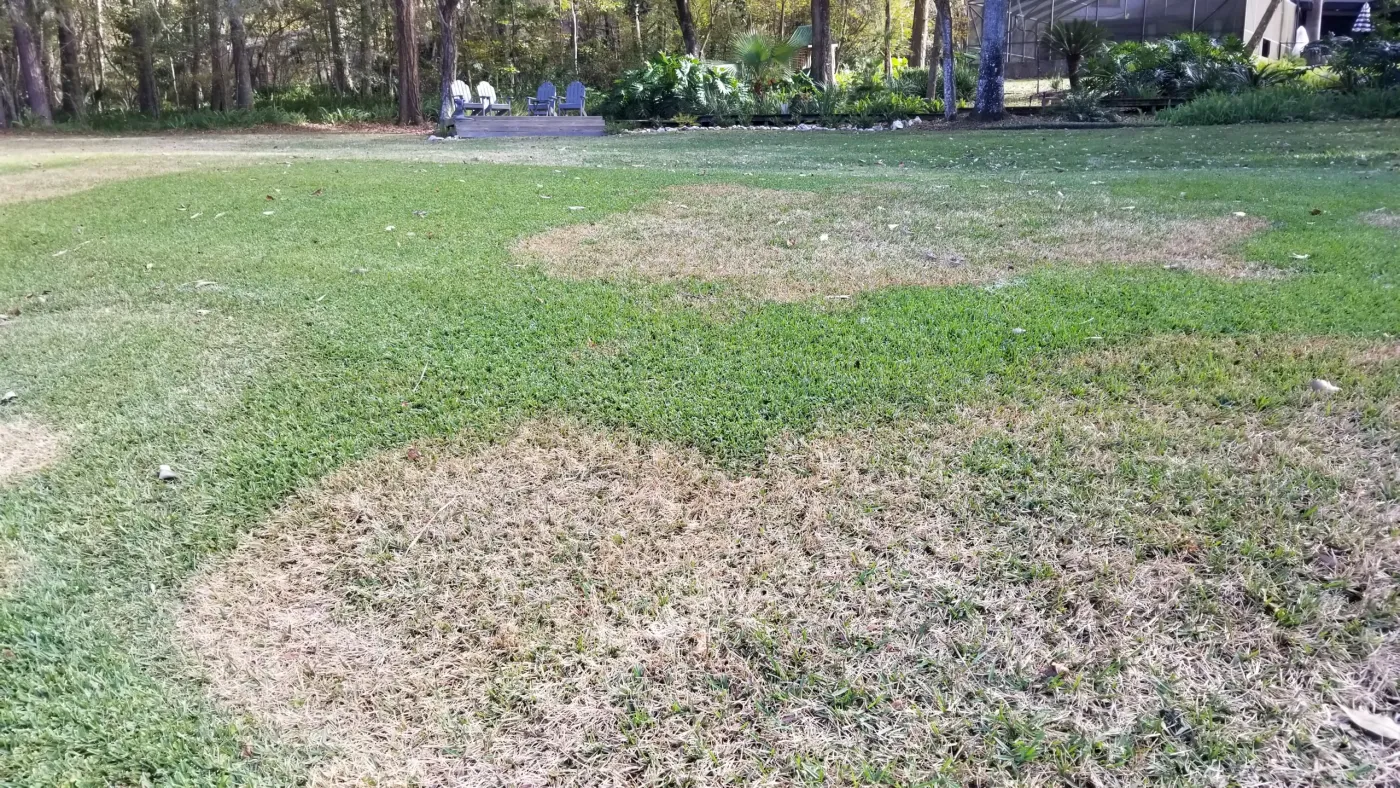During the winter months, your grass may begin showing brown circular spots that seem to be struggling. This is the first sign of Large Patch Fungus, which is a fungal disease commonly seen in Florida lawns during the cooler months, particularly St. Augustine and Zoysia grass.
Turf in Florida is most vulnerable to this Fungus when rainfall, high humidity, or excessive irrigation leave your lawn damp for a duration of more than 48 hours. This turf disease is active when nighttime temperatures range from 60-75 degrees and daytime temperatures don’t exceed 85-90 degrees. This is the biggest reason why it is so prevalent in spring and summer, as the high temperatures that typically evaporate the moisture aren't present in early spring and late fall.
To reduce the chances of being infected by Brown Patch Fungus, or limit and manage the disease water your lawn on an as-needed basis, rather than just a set schedule, and consider the time of year and rainfall, to ensure your turf is receiving the proper amount of water. A fungicide application should also be made in order to stop the spread of the fungus. New grass will grow in eventually, but this can be a slow process in the Fall, as turfgrass is heading toward its dormant period.
As ugly as Large Patch can look, it’s important to remember this disease typically does not kill the entire grass plant - and is mostly cosmetic. Frequent mowing at the recommended mow height is critical to the health of the turf. It is very important that your turf is not cut too short, or “scalped”.
It must be mentioned, though, that active Large Patch fungus can be spread easily without much effort. In the event an area with active Large Patch Fungus is mowed, make sure to clean off the tires and blades of the mower after going through the affected area to avoid spreading it through your entire Gainesville lawn.
Large patch Fungus is a disease that has once infected the soil, will reoccur every year in the fall and spring. This is why we offer a disease prevention lawn health program that keeps it from popping back up every year. It won't cure it, because there is no known cure yet - but it stops it from presenting symptoms in your lawn which is the most important part.
Keep in mind, there may be other causes for brown patches in a lawn though. Ching Bug damage from summer or sprinkler service may be needed? If you see discoloration in a lawn and aren’t sure what the cause is, contact us at (352) 378-LAWN for a complimentary lawn inspection.
Gainesville Landscape Pest of the Month: Large Patch Fungus


